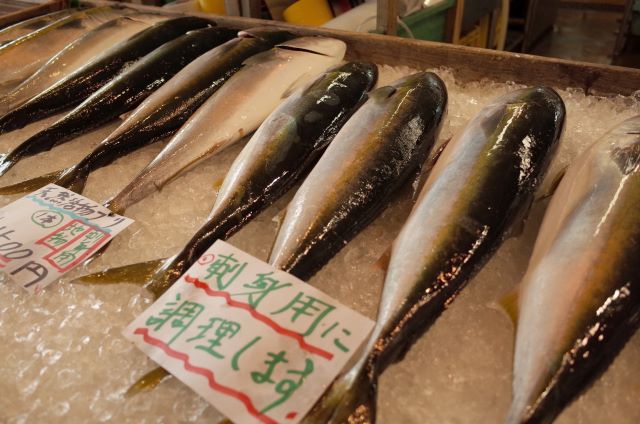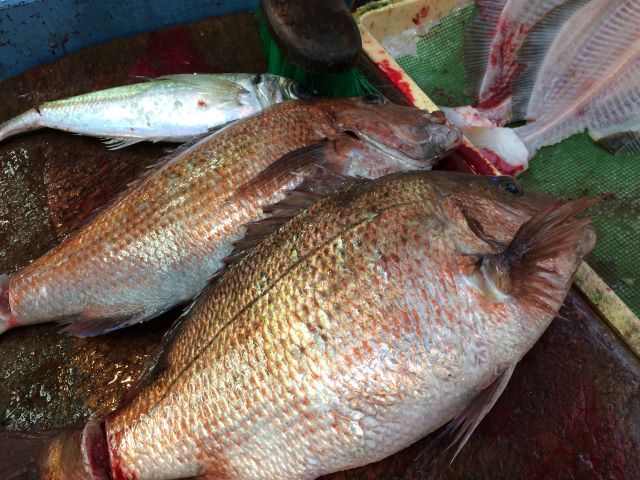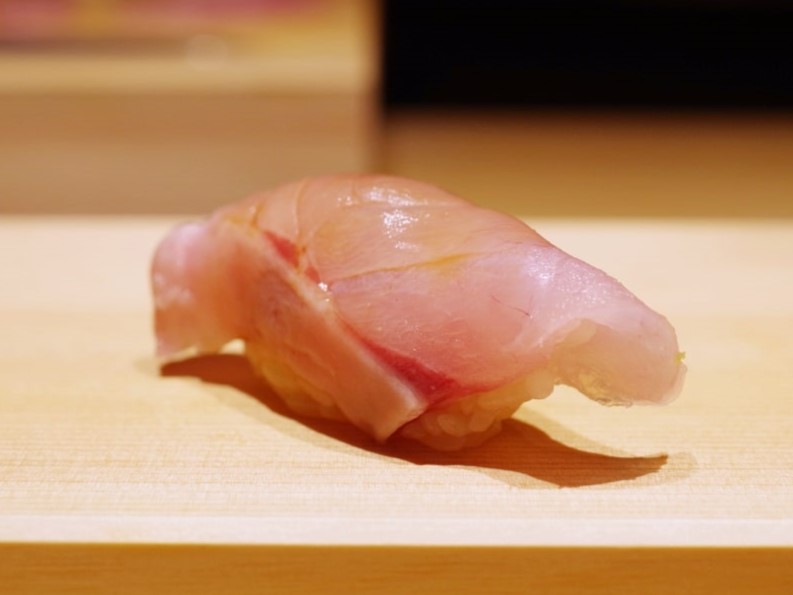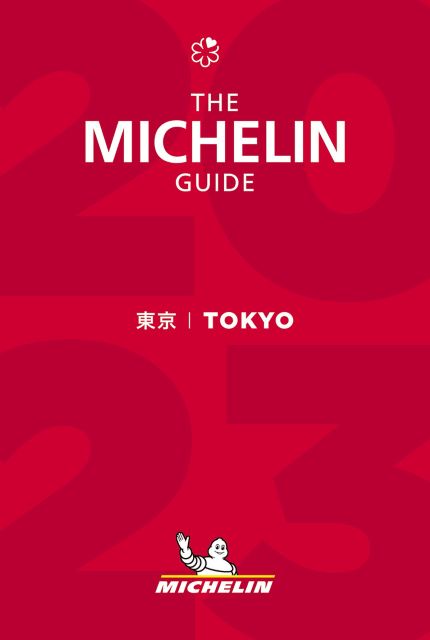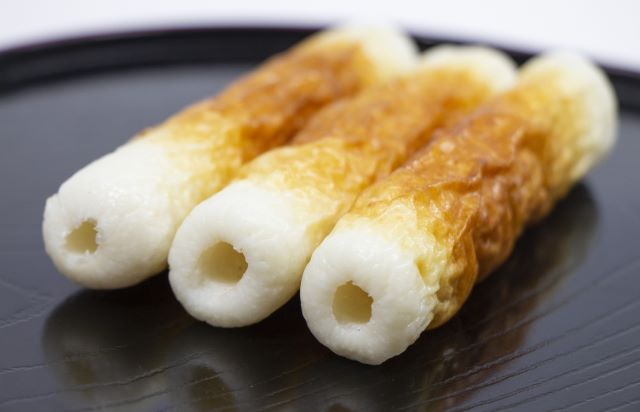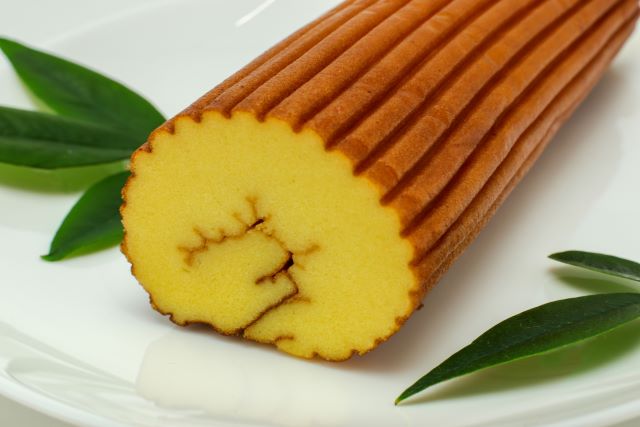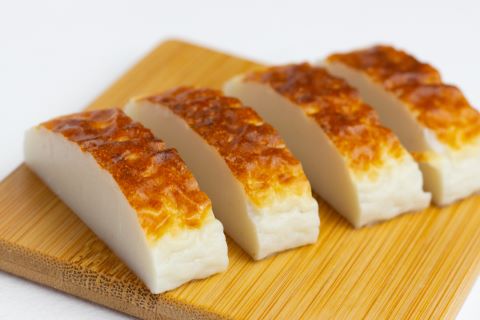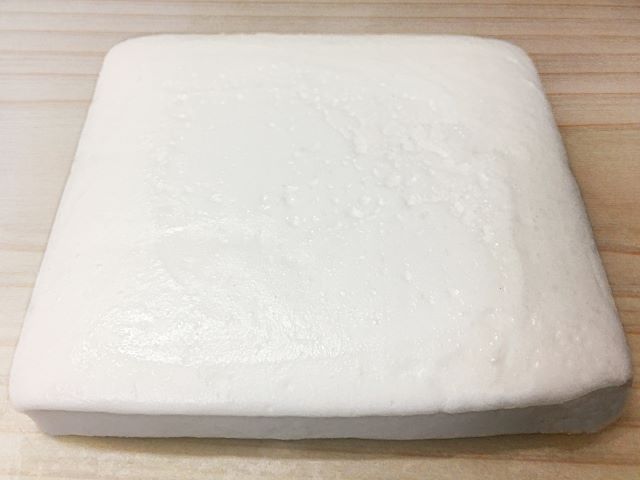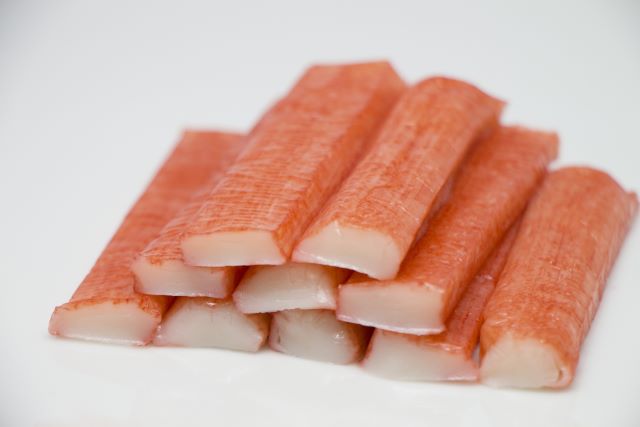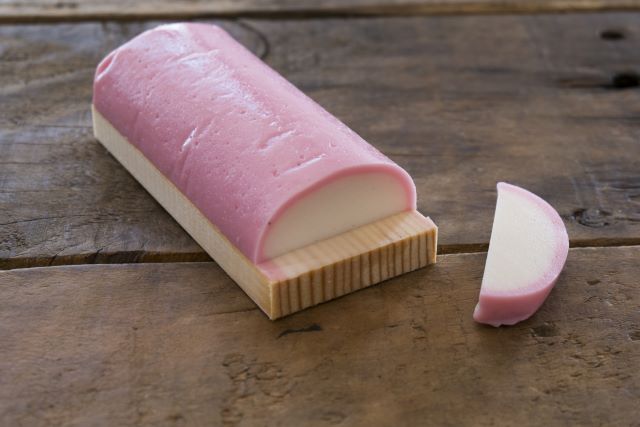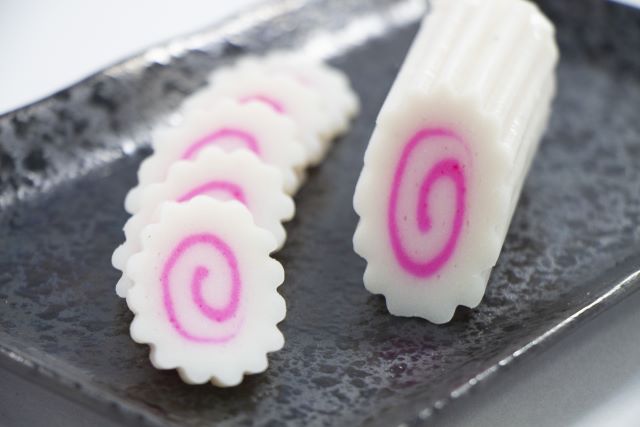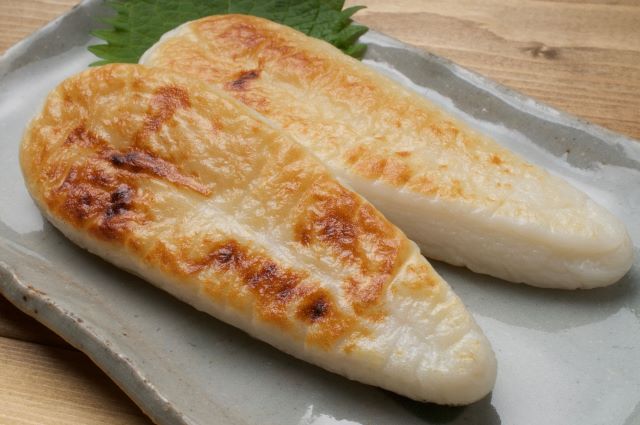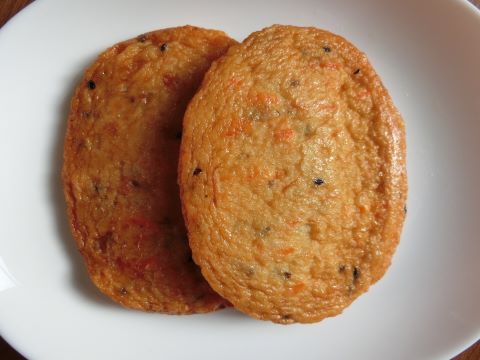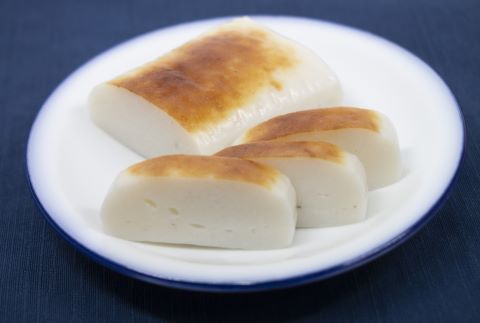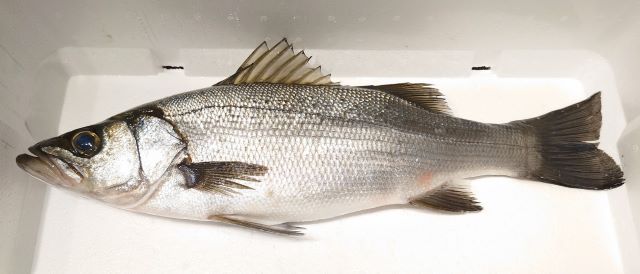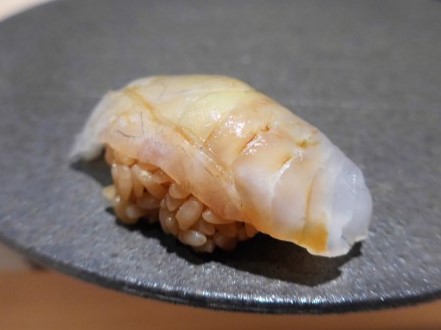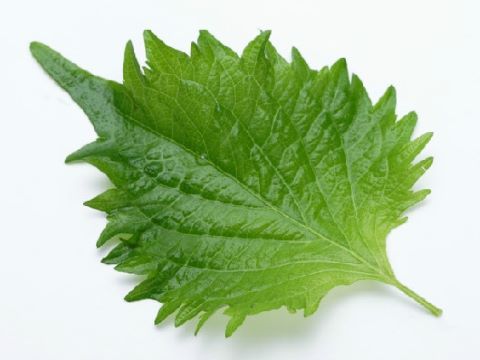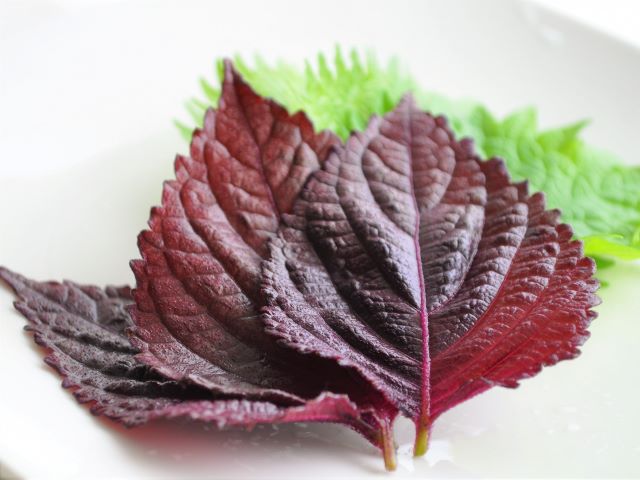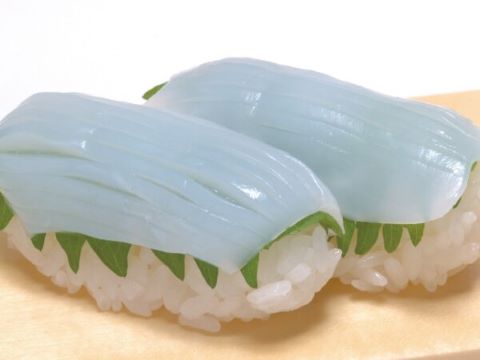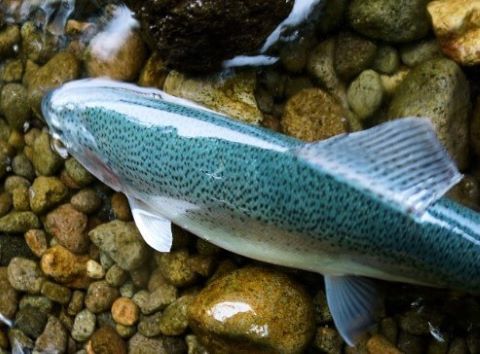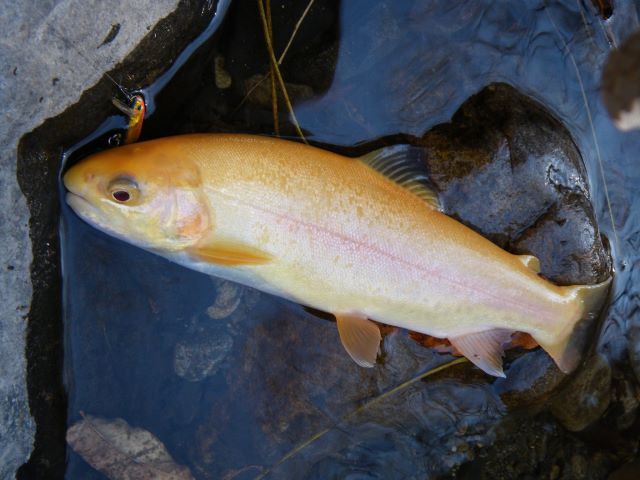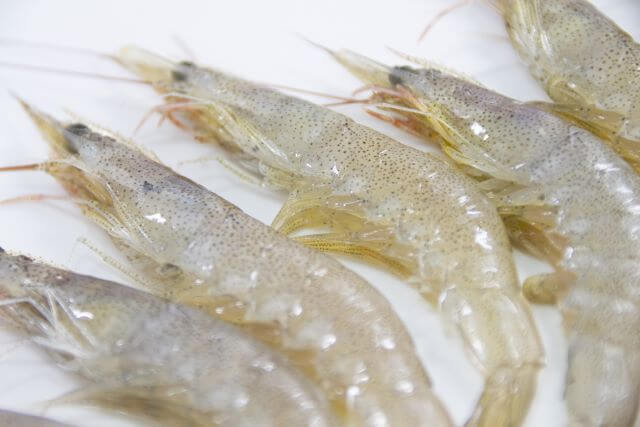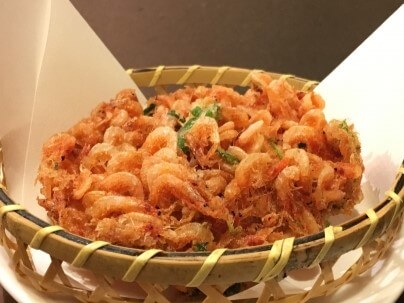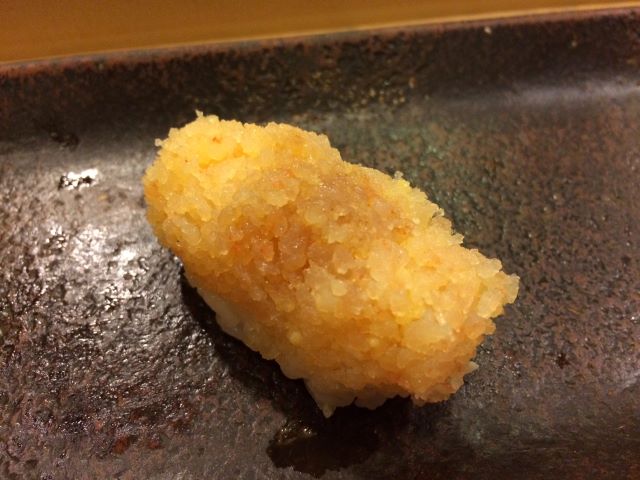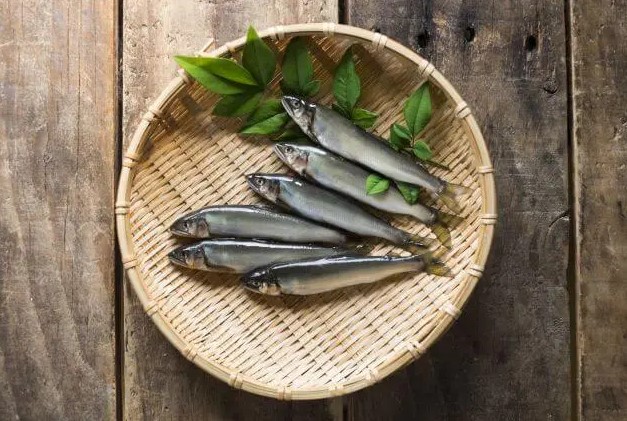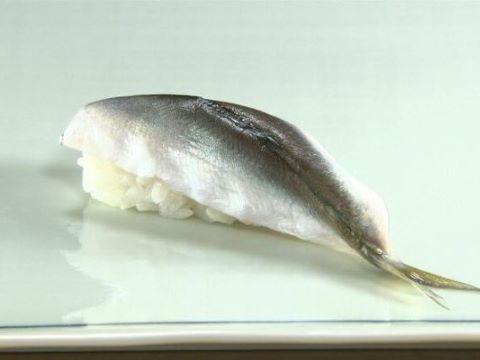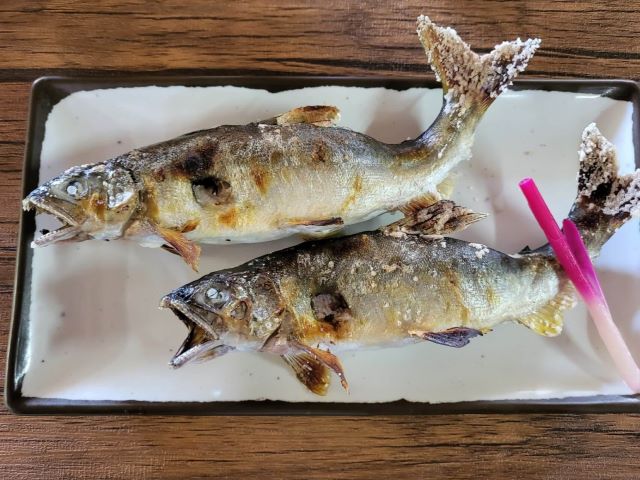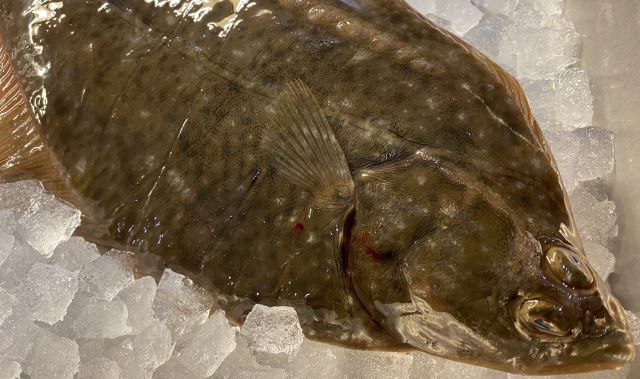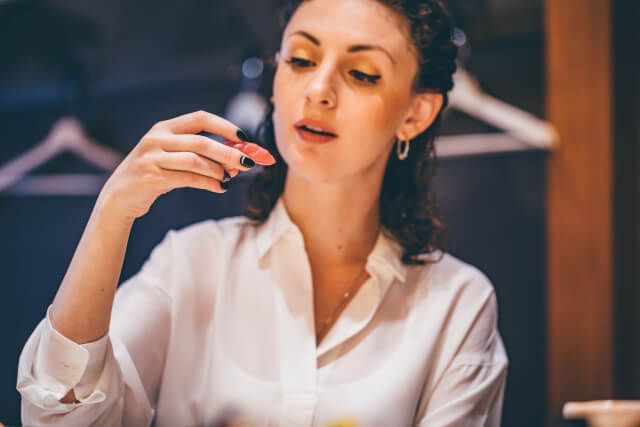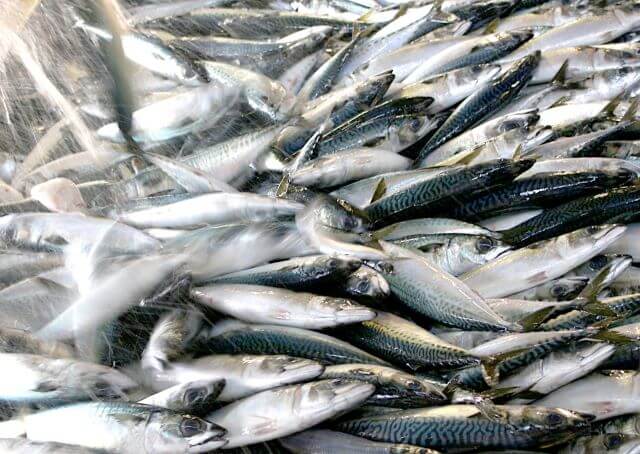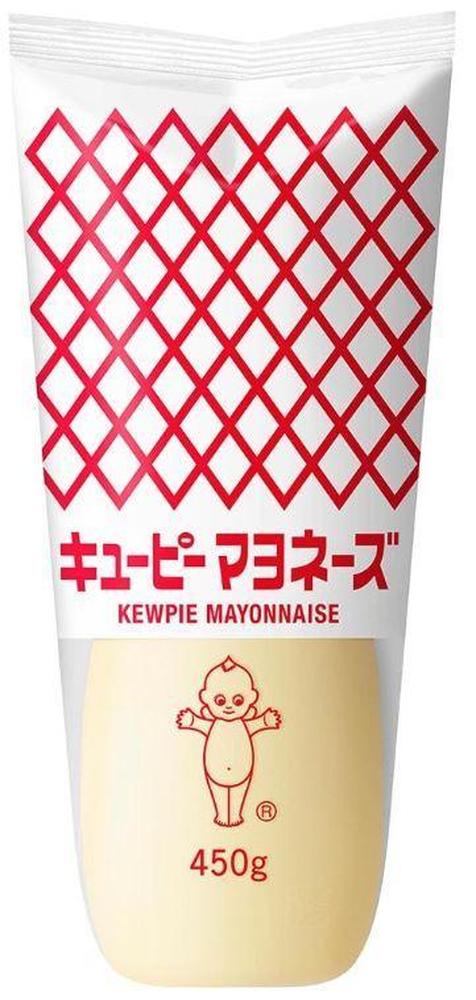
Find out why Mayonnaise has become a citizen on the dinner table
Japan is not a large country. Even so, fresh produce from the sea and mountains is abundant. Even without a large-scale distribution system in place, we Japanese have been able to obtain fresh ingredients in fresh conditions easily.
This is thought to have given rise to a raw food culture in which vegetables, eggs, fish, and even internal organs such as horse meat, beef, and liver are eaten raw. Since fresh ingredients are readily available, it is only natural that there is no need to make unnecessary modifications to them. For this reason, Japanese cuisine has become dominated by methods that do not require much modification of the ingredients. In Italy, the ingredients are fresh, and in China and France, cooking techniques have developed to compensate for the lack of freshness of ingredients. This is just my personal opinion.
And speaking of Japan’s unique food culture, we must not forget its rice culture. Japanese rice is japonica rice, which is light and delicate in flavor. Inevitably, the rice is not eaten by itself but is accompanied by a strong-flavored side dish.
This is likely what led to the development of flavorful seasonings in Japan. The traditional Japanese soy sauce and miso, not to mention ketchup and Worcestershire sauce, which are two of the most popular sauces in Western cuisine, along with mayonnaise, are seasonings with a very distinct flavor. Likewise, mayonnaise is a strong-flavored seasoning, so it is assumed that side dishes made with it went well with rice.
In general, the Japanese palate is said to be well suited to amino acids and the peptide umami before it becomes an amino acid, and this amino acid is found mainly in fermented foods. Japan’s mild and humid climate is ideal for the production of fermented seasonings, and it is no wonder that miso (fermented soybean paste), soy sauce, and salted fish, which are fermented foods, have developed.
Interestingly, mayonnaise also begins to mature about a week after it is made, and the protein contained in the egg yolk in mayonnaise is broken down into amino acids and peptides, resulting in the umami that the Japanese like. Mayonnaise is usually not pasteurized because it separates when heated. This phenomenon occurs because the mayonnaise is still alive after being packed in the container.
Compared to the Western type of mayonnaise, which uses whole eggs, the yolk type of mayonnaise is more common in Japan. The yolk has a higher umami of amino acids and peptides than the egg white, and this may be the reason why Japanese mayonnaise has adapted well to Japanese tastes. The combination of this taste backbone and the umami of Japanese-style mayonnaise has helped mayonnaise to firmly establish itself in Japanese food culture.
What kind of food is mayonnaise?
I said mayonnaise is a food, but many people may think of it as a condiment. Mayonnaise, as you know, is made from vinegar, oil, and eggs. In Europe, where it originated, it was made from lemon juice, wine vinegar, olive oil, and eggs. However, in modern Europe, mayonnaise seems to be made at home, unlike in the United States or Japan.
Mayonnaise has some notable characteristics. First, the oil in mayonnaise has the effect of masking the bitterness of the food. Furthermore, the oiliness of mayonnaise is reduced by emulsification, making it very easy to eat. The bitterness of vegetables is sometimes unacceptable, but mayonnaise envelops it. Meat marinated in mayonnaise becomes tender. It has the effect of softening the hardened tissues of meat. Mayonnaise quickly removes the odor of raw fish. The sour vinegar flavor overcomes the unpleasant smell of raw fish, and when it is eliminated, it has so many positive aspects that there is no end to it.
Japanese mayonnaise is restricted by JAS standards for consumer safety. Incidentally, JAS is based on the standards of the U.S. FDA. According to the standard, mayonnaise contains 65% or more edible vegetable oil, vinegar and citrus juice, egg yolk and egg white, salt, sugar, spices, chemical seasonings, acidifiers, and citric acid. In Japan, mayonnaise may not contain any preservatives, emulsion stabilizers, food coloring, or soy protein. Yellow mayonnaise is just made with lots of eggs. This is why the JAS standard does not allow the use of food coloring that misleads people into thinking that there are lots of eggs in the product.
Why doesn’t commercial mayonnaise go bad?
Japanese standards for mayonnaise prohibit the use of any preservatives or food coloring. It is natural to ask the question, then, why mayonnaise does not spoil when it is made from egg yolks.
Simply put, think of pickles pickled in vinegar. Depending on the method of production, they can be stored for a year or more. The reason for this is that the acetic acid in vinegar has powerful bactericidal properties.
According to mayonnaise standards, at least 65% of the edible vegetable oil does not go rancid. The sterilizing power depends on how much acetic acid and salt are present in the remaining 35% of the ingredients.
Homemade mayonnaise made at home or in a restaurant is used up quickly, so there is no need to think about shelf life, just make it to your own taste. However, this is not the case with store-bought mayonnaise. And since mayonnaise is not heat sterilized, its composition is very important to prevent it from spoiling in its raw state. Of course, it is also important to manufacture it hygienically in a factory. The combination is determined by considering factors such as the fact that it must not separate during transportation and that it must have a taste preferred by the consumer.
According to actual bacterial test data, Escherichia coli is killed in 6 hours in mayonnaise. Staphylococcus and salmonella, which cause food poisoning, are killed in 24 hours. Even the yeast Hansenula anomala, which is relatively acid-resistant, dies in about 8 days.
As a general guideline, raw food is considered hygienic if it contains less than 100,000 live bacteria per gram. Frozen food that is heated and eaten meets the criteria of the Food Sanitation Law with a count of 3 million live bacteria or less per gram. Normally, it is considered that even if there are 100,000 bacteria per gram of food, the food will not spoil, but if the bacteria count exceeds that level, the food will gradually start to spoil or go rancid. In other words, most bacteria die in mayonnaise. Therefore, it is safe to assume that commercial mayonnaise is first of all free of bacteria.
Why is vinegar good for your health?
The answer is simple. It is because vinegar lubricates the citric acid cycle. In 1953, Dr. Hans Krebs of England won the Nobel Prize in Physiology or Medicine for his research on the pathway of tissue respiration in the human body. This is called the citric acid cycle, which is the only mechanism that produces the energy necessary for life, and without this cycle, organisms cannot live!
The problem here is that during strenuous exercise or illness, large amounts of glucose are burned, creating an abnormally high amount of pyruvate, which is further converted into lactic acid. That lactic acid makes body fluids and blood acidic, causing so-called Acidosis. In addition, lactic acid combines with proteins in body tissues to form lactic acid protein, which causes stiff shoulders and muscle pain, as well as increased deposition of cholesterol, leading to arteriosclerosis and hypertension.
At this time, it is explained that when vinegar is eaten with salads, the organic acids contained in vinegar, such as acetic acid, malic acid, and citric acid, can smoothly advance the citric acid cycle and bring lactic acid back into the cycle. In other words, vinegar has been elucidated to act as a lubricant for the Citric acid cycle.
The vinegar in mayonnaise does more than just accentuate the delicious taste; it also helps to clear away fatigue. The Citric acid cycle explains why the blood and body fluids of healthy people are slightly alkaline and become acidic when tired or ill. It also depends on the diet. Eating only acidic foods, i.e., meat and seafood, will cause the blood and body fluids to become more acidic, and cholesterol will be deposited in the blood vessels more easily. The diet must be well-balanced. This is where vinegar comes into play. Vinegar is burned efficiently in the body and is incorporated into the metabolic mechanism to act as an alkaline food. Other effects include increasing appetite and aiding digestion, and it is also very effective in cleaning the body and activating the body’s internal energy.
Where does mayonnaise’s good taste come from?
Mayonnaise is an oil-rich food. Oil stimulates the brain to release hormones that make us want to eat again. However, oil does not remain in its original state, but is scattered throughout the food, creating a richness. Humans respond to this richness with a sense of deliciousness. In other words, mayonnaise is a synergy between the richness created by the oil mixed and dispersed in the egg and the richness of the egg yolk itself.
What makes mayonnaise different from other seasonings is that it contains the egg itself, rather than food extracts or essences. We believe that mayonnaise itself may be regarded as an independent food or dish, beyond the framework of a mere sauce.
Isn’t too much mayonnaise bad for you?
One of the main components of mayonnaise is egg, a food high in cholesterol. However, since mayonnaise is a food high in cholesterol, it is too early to assume that it is bad for you.
The main functions of cholesterol include “making cell membranes,” “making bile acids,” and “being a raw material for sex hormones and adrenal corticosteroids. The production of cell membranes is the basic building block of the human body, without which the human body would not exist. Bile acids are necessary for digestion, and without normal amounts of bile acids in the body, digestion would be out of balance. The same is true for hormones. Without a certain amount of cholesterol in the body, the human body cannot function normally.
The term “cholesterol” refers to both HDL cholesterol and HDL cholesterol. HDL cholesterol is necessary for the body, and most of the cholesterol contained in egg yolks is HDL cholesterol. On the other hand, LDL cholesterol, which is said to cause arteriosclerosis, is not in itself bad. It is believed that oxidized LDL cholesterol, which is created when LDL cholesterol is oxidized by active oxygen, damages the vascular wall, causing inflammation and arteriosclerosis.
Cholesterol is not only ingested through diet. About 70% of the cholesterol needed by the body is synthesized in the body, and the remaining 30% is taken in by the diet. Incidentally, the amount of cholesterol synthesized by the body is 600~700mg per day. On the other hand, a 50 g egg contains about 235 mg of cholesterol. The proportion of egg in Mayonnaise is lower than it appears, and the amount of cholesterol contained in a tablespoon (15g) is only 24mg. This is not an amount to be concerned about.
The human body is well designed to maintain balance by reducing the amount of cholesterol synthesized in the body when the amount of cholesterol in the diet is too high. In addition, cholesterol is transported from the liver to each tissue, and conversely, cholesterol is collected from each tissue to the liver, thereby keeping the amount of cholesterol in the blood at a constant level. The problem is not the intake of cholesterol itself, but the imbalance of cholesterol in the blood.
And an experiment has been conducted with surprising results. Healthy subjects and hyperlipidemic subjects were given 15 g of Kewpie mayonnaise per day for 12 weeks in addition to their conventional diet, and the lipid levels in their blood were measured. The total cholesterol concentration in the blood of the healthy subjects was slightly decreased. The hyperlipidemic subjects also showed a decreasing trend. It would seem that a constant intake of mayonnaise would increase the amount of cholesterol, but in the experiment, there was no trend toward an increase. In addition, there was no change in body weight after 12 weeks of mayonnaise consumption, a result that defies the conventional wisdom about mayonnaise. Similar experiments have been conducted elsewhere with the same results.
New Possibilities for Eggs
The amount of choline needed per day is said to be around 450 mg. 1 egg weighing 60~70 g contains 1000 mg of choline. 1 tablespoon of 15 g of mayonnaise contains about 110 mg of choline, which is 1/4 of the daily requirement. One-quarter of the daily requirement of choline can be obtained from a 15 g spoonful of mayonnaise. Incidentally, 200 cc of milk contains 28 mg, and a tablespoon of butter contains 20.4 mg, so eggs are by far the most efficient way to eat.
Mayonnaise contains a lot of salt
Mayonnaise is a sour and salty food, and while one may worry about too much salt if one eats too much, it is much less salty than one would generally imagine. The saltiness is due to the seasonings and spices. It contains less salt than other seasonings. Mayonnaise has 0.3 g of salt per tablespoon, the lowest amount of salt among the major seasonings, compared to 0.6 g of ketchup, 3 mg of soy sauce, and 2 mg of miso. Despite its low salt content, the full-bodied mayonnaise can add a lot of flavors to ingredients even in small amounts, and may be considered a good choice for dieting.
Does eating mayonnaise make me fat?
Usually, a tablespoon of mayonnaise has 100 kcal. One hot dog has about 289 kcal, so three tablespoons would be the same calories. It is certainly a high-calorie food. It is a very oily food, but the vinegar makes it surprisingly refreshing, which is one of the reasons why we tend to eat a lot of it. We should not eat too much of this food just because it tastes good but try to eat about 1 tablespoon per meal. It is not harmful to your body even if you continue to eat it every day, but only if you know how much to eat. It is not recommended to eat so much that you can’t see the salad. Instead of worrying about gaining weight, one should try to eat a well-balanced diet by eating green and yellow vegetables together.
Pairing mayonnaise with other foods
The range of uses for mayonnaise is unlimited. Please listen to this article without preconceived notions that mayonnaise would not be suitable for such foods. First of all, in the case of Japanese food, it is difficult to find foods that mayonnaise does not go well with, such as broiled eel, tempura, yakitori, oden, chilled tofu, soba noodles, and so on. Other than that, it goes well with all kinds of food such as gyoza, ramen, shumai, spring rolls, bibimbap, kimchi, tom yang kung, beef stew, omelets, curry rice, minestrone, edamame, banana, apple, orange, apple pie, pudding, chocolate, donuts, and many others. It can soften the aroma of stinky foods, freshen oily foods with its acidity, and deepen the flavor of overly light foods with the richness of eggs.
The emergence of polyethylene multi-layered containers
When Mayonnaise was launched in Japan, it was in glass bottles. In the 1960s, plastic was developed, polyethylene containers appeared, and bottling containers were quickly converted to polyethylene containers. Glass bottles were used because oxygen permeation would oxidize the mayonnaise oil and form peroxides, which would gradually ruin the flavor. However, the ability to squeeze out without using a spoon seems to have been significant, and it seems to have been replaced.
The difference in preservation effect on mayonnaise between polyethylene containers and glass bottles was that polyethylene alone had the disadvantage of poor preservation compared to bottling due to its oxygen permeability.
In the 1970s, technological advances made it possible to improve the oxygen permeability of polyethylene. A three-layer technology was developed, with polyethylene on both sides and an oxygen-impermeable plastic-like eval resin in between.
The three-layer polyethylene-eval resin-polyethylene container is used today for most food containers. This has greatly improved the shelf life of mayonnaise and has made bottled and polyethylene multi-layer containers nearly identical in terms of quality.
Bottled mayonnaise is more prone to oxidation after opening because of the large area exposed to air when the lid is opened. Polyethylene multi-layer containers have become the mainstream in Japan because of their advantages such as easy squeezability, no risk of breakage, lightweight, and low container cost.
Here is a summary of the characteristics of Kewpie mayonnaise.
The main ingredients of Kewpie mayonnaise are also oil, eggs, and vinegar. Of course, each of these ingredients should be carefully selected and good ones used, but the strange thing about mayonnaise is that it does not taste perfectly delicious on its own.
What became clear in Kewpie’s laboratory is that what is important is the compatibility of vinegar and oil, and vinegar is a major key, especially in terms of umami. Surprisingly, vinegar and oil go together better when they are both strong. If one of the habits is weak, the other will win out and instantly become unbalanced.
Let’s look at the history of the oil used in Kewpie mayonnaise. In the postwar period when mayonnaise became popular, cottonseed oil from cotton seeds was mainly used. Since this oil has a strong habit, it was combined with malt vinegar, apple cider vinegar, and other vinegar with strong characteristics. However, with the development of synthetic fibers in the 1960s, cotton cultivation decreased and cottonseed became scarce. This made it difficult to secure cottonseed oil, and other oils with weaker characteristics were used instead. Kewpie has changed the vinegar to match the oil.
These days, Kewpie uses a blend of vinegar made from sake lees and grains. The ingredients of oil that are good for the body are generally considered to be oleic acid, linoleic acid, and α-linolenic acid in the ratio of 60:32:8. Rapeseed oil, for example, is close to this ratio, and Kewpie uses salad oil that is also close to this ratio.
Although oil accounts for the largest proportion of ingredients, vinegar can be said to be the key to flavor. Taste preferences are said to change over time; for example, Kewpie mayonnaise was sourer in the past. The percentage of vinegar is said to be less now than in the past. In the past, there were few homes with air conditioning, and people sweated a lot. Therefore, mayonnaise with a lot of vinegar and a strong flavor was preferred. On the other hand, today, air conditioning is available everywhere, and people do not sweat as much, so the amount of vinegar is less than in the past.
Compared to mayonnaise made overseas, Japanese mayonnaise generally contains almost double the amount of vinegar. This is because mayonnaise is a unique egg yolk type of mayonnaise in Japan, and cannot be heat sterilized like other foods because it decomposes when heated. In addition, mayonnaise with high yolk content is prone to spoilage, and to prevent this, a lot of vinegar, a natural preservative, was used. This ultimately made Kewpie mayonnaise tastier.
Factory Tour
[sc_apply url=”https://sushiuniversity.jp/apply/”]
We hope this information will be helpful.

Revision date: March 15, 2024
Share this article
